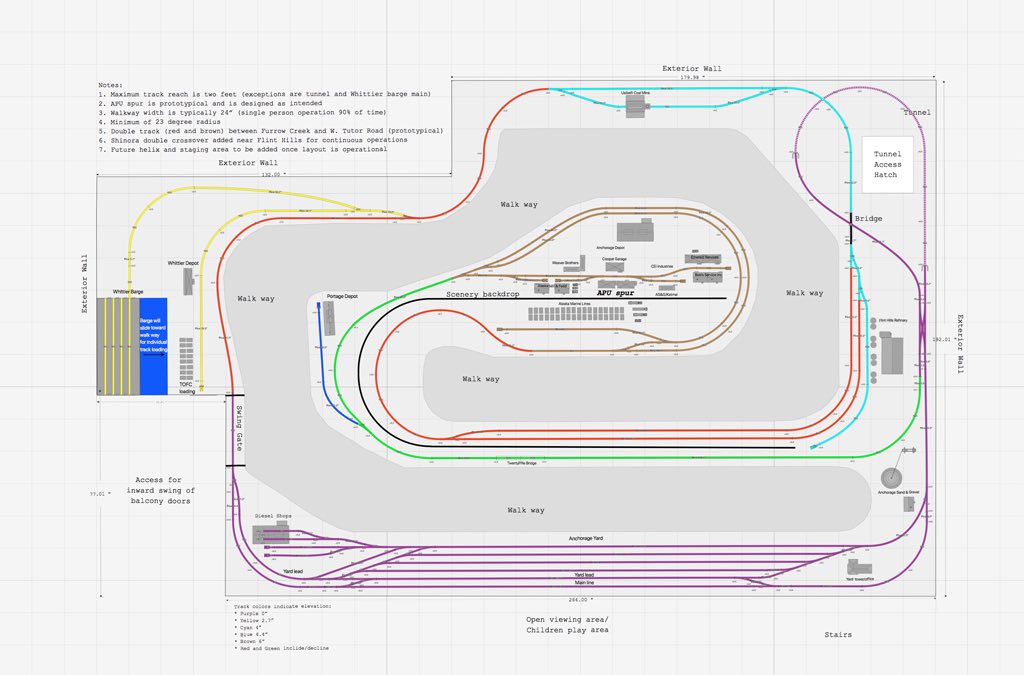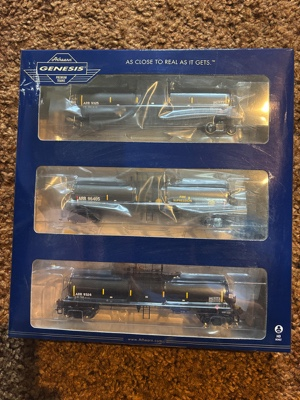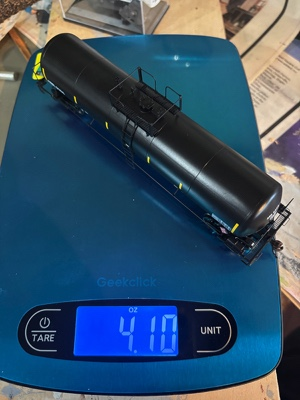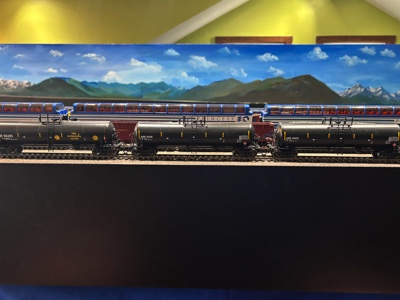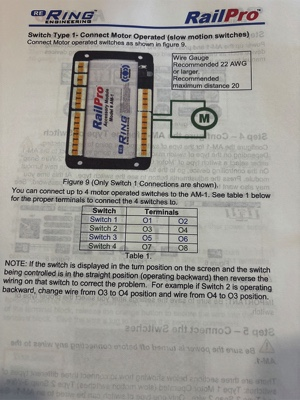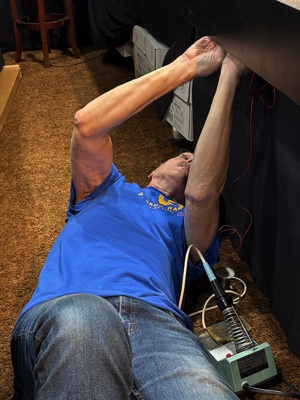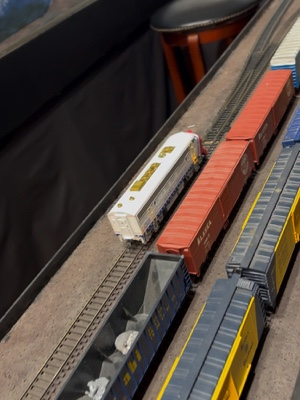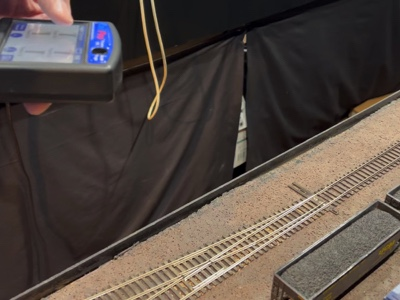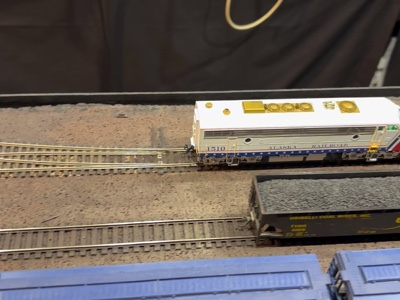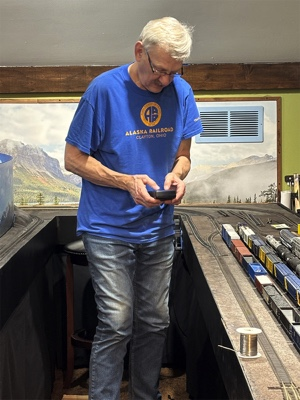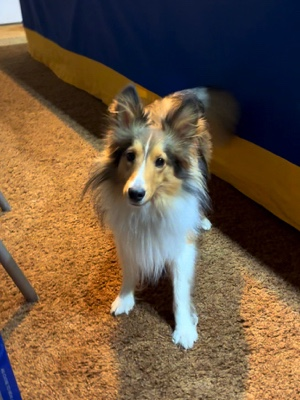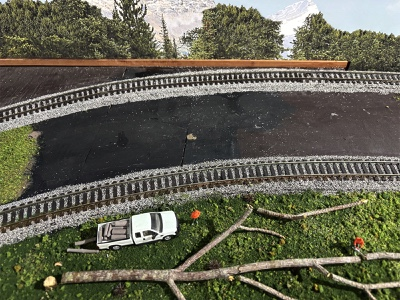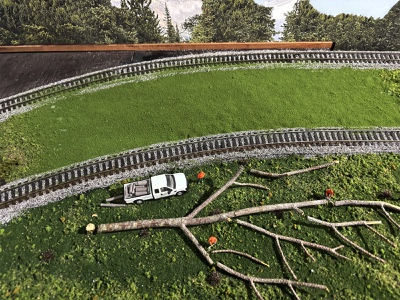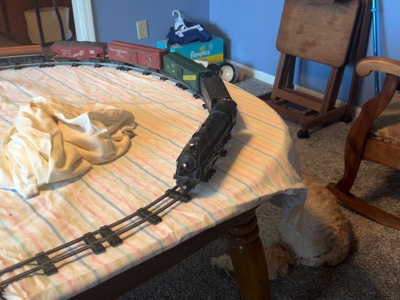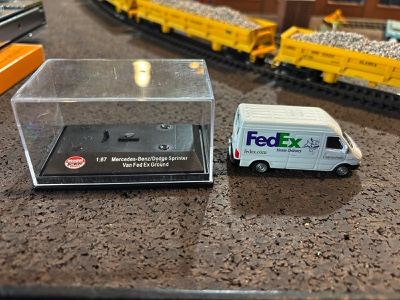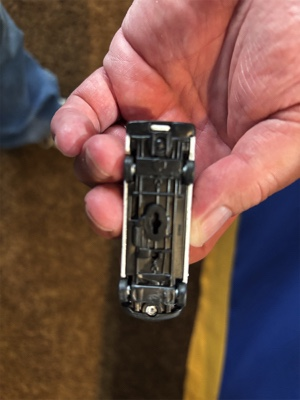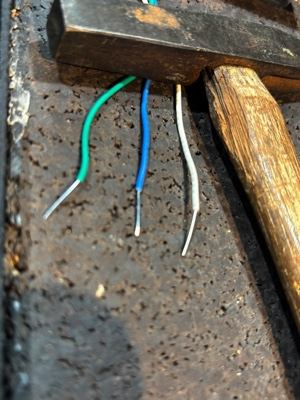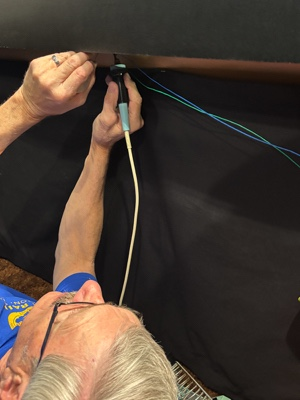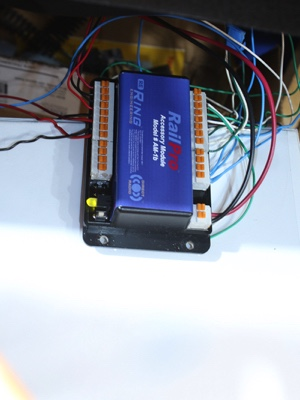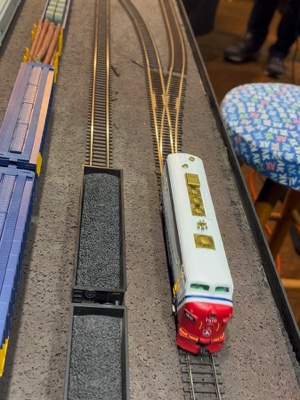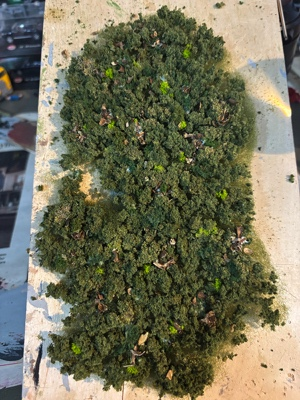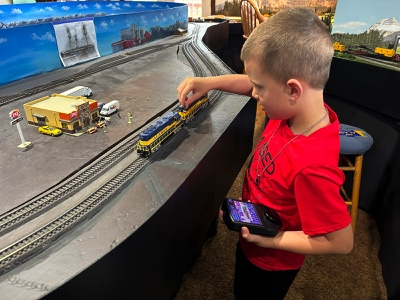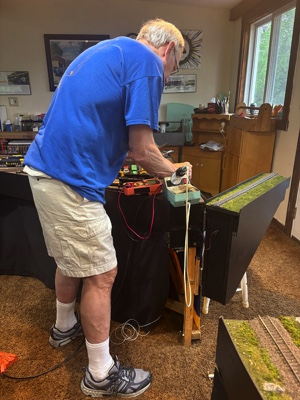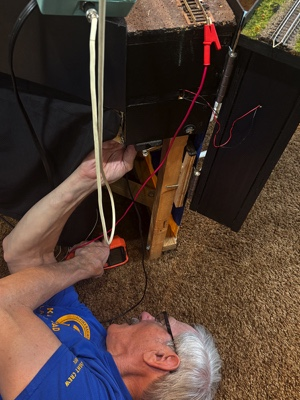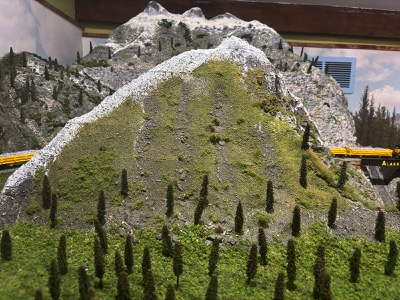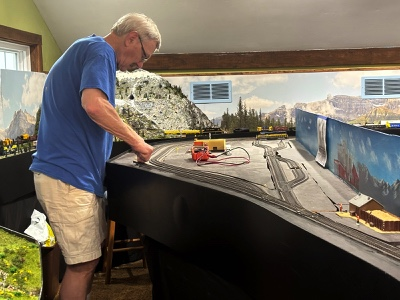| On Mother's Day eve, Liam and Lincoln made a visit to the train room. Unfortunately, running was limited due to low locomotive power. John switched locomotives and found the problem persisted. He tested the track voltage and found it to be satisfactory. John decided to let Rick check on this during train night. |
With the two new stubs in place and Tortoise machines operational, Rick turned his attention to segmenting the power to them. Once this is completed, the power will be cut to these stubs when the swing gate is open. This allows for unpowered locomotive storage on these stubs. |
Rick removed the deadman switch and hooked up the power wires from the stub. Unfortunately, he still found connectivity to the stubs. After a great deal of analysis, he discovered he cut the wrong rail. Next week, he will fix the problem and test the power connections. |
| John spent the evening adding to and touching up scenery throughout the layout. Vehicles and people were added to the Whittier Depot. Ground foliage was added to the side of the removable mountain thus concealing the gap. More ground foliage was added throughout the mountain and canyon sections. |
Rick took some time out to hunt down the locomotive power issues. He soon discovered one of the rails had picked up a large amount of oxidation. He used 400 grit sandpaper to clean the rails. Once he finished this effort, his fingers were black. It is unknown how the inside rail accumulated oxidation so quickly. Gremlins? Ghosts? |
|
